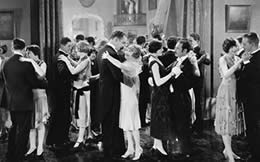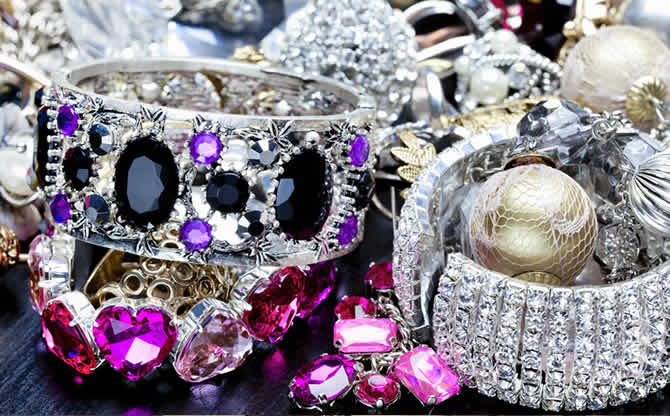Gentlemen learning to dance in the Golden Age
In the golden age, gentlemen learning to tango trained extensively at practicas. You might have heard that in the early days of tango, men were tango-ing together. There are lots of unfounded myths about tango history but this one is not a myth.
Men of the time didn’t necessarily choose to dance with one another; practicas happened as a necessity. As men made the most of the migration waves towards Buenos Aires, this led to a massive gender imbalance.
In this context, someone new on the tango dancefloor would go to practicas first to watch other gentlemen dance. He would then learn to follow a more experienced male tango dancer, until he was deemed good enough to lead another gentleman. It is only after reaching a comfortable level that he would go to a milonga. In his first outing at a milonga, an experienced milonguero would ask of a female friend a favour: to dance with the new protégé. If it went fine, he would be able to return to milongas. If it didn’t go well – that is to say, if his partner didn’t enjoy the dance – he would need to go back to the drawing (dancing) board and train some more before being given a second chance at a milonga.
It would sometimes take a new dancer 3 years to go to his first milonga.
 Gentlemen of the time would go out several times a week. Even once they were seasoned milonguero, they would continue dancing at practicas – it is said that the level of dancing was higher at practicas than at milongas, as leaders would take risks and try new steps – which they would never do at a milonga.
Gentlemen of the time would go out several times a week. Even once they were seasoned milonguero, they would continue dancing at practicas – it is said that the level of dancing was higher at practicas than at milongas, as leaders would take risks and try new steps – which they would never do at a milonga.
Ladies learning to dance in the Golden Age
The story was very different for ladies – they would normally learn tango at home, with their family. It could be their father, brother or uncle showing them the moves, or even their mothers or sisters. Indeed, role exchange has always been part of tango dancing.
Women who were really into tango would lead and follow. Because of the gender imbalance, ladies would dance all night, regardless of whether they were good dancers or not. Of course, the best dancers were more sought-after.
Why this helps us dancing tango
 If you have ever been to Buenos Aires, you probably have heard old school milongueros and maestros say that “ladies are diamonds”. This definitely refers to the origins of Argentine tango and to how precious it was to dance with a lady in the Golden Age.
If you have ever been to Buenos Aires, you probably have heard old school milongueros and maestros say that “ladies are diamonds”. This definitely refers to the origins of Argentine tango and to how precious it was to dance with a lady in the Golden Age.
As a follower, I think it is beautiful to be treated as a diamond and to feel like one. The dances I enjoy most are with partners who make me feel I am the most important person on earth, when they are completely in the moment, giving in the tango embrace.
What it means for ladies…
Ladies, when not being given diamonds, let’s enjoy being one, being the focus of the dance. To be a sought-after diamond, let’s remember why tango was born: it was an occasion to take someone into one’s arms. After all, tango is a hug (mind you, a very sophisticated one). As tango diamonds, we can strengthen the connexion that makes the dance so special by focusing on feeling the lead with our bodies and not thinking about it with our heads. We can also enjoy being “present”, and giving in to the action-reaction chain that is at the heart of the tango dialogue. For this dialogue to work, the follower needs to stop trying to guess (which results in ‘anticipating’), but instead letting her intuition (and heart) guide her. Being a diamond does not, of course, mean you need to be harsh towards your partner: on the contrary, it means to be kind to him, to be like a very close friend.
… and gentlemen
Gentlemen, how about keeping your love of tango fresh and, at the next tanda, pretend for a minute that it has taken you three years to invite a lady on to the dancefloor? To make your diamond shine ever brighter and to enjoy a stronger connexion, you can also try and tone down the pressure of your abrazo (embrace), and make it cosy and safe; and sometimes to slow down, or even to simplify your moves to make sure she follows more comfortably and feels treasured. In short, it means to forget about the word around you and give your full attention to your partner. A beautiful connexion doesn’t necessarily mean tension or use of strength. I am particularly fond of softer leads, for example when my partner breathes in or out to signify subtle leads like the beginning of a move, a change of weight or a pause.
See you soon on the dancefloor.
Abrazo, Nati y Bruno
Tanguito
Argentine tango classes in London | Tango clothing for men & women | Tango holidays in Buenos Aires
Source about the history of tango:
“The meaning of tango, the story of the Argentinian Dance”, by Christine Denniston











